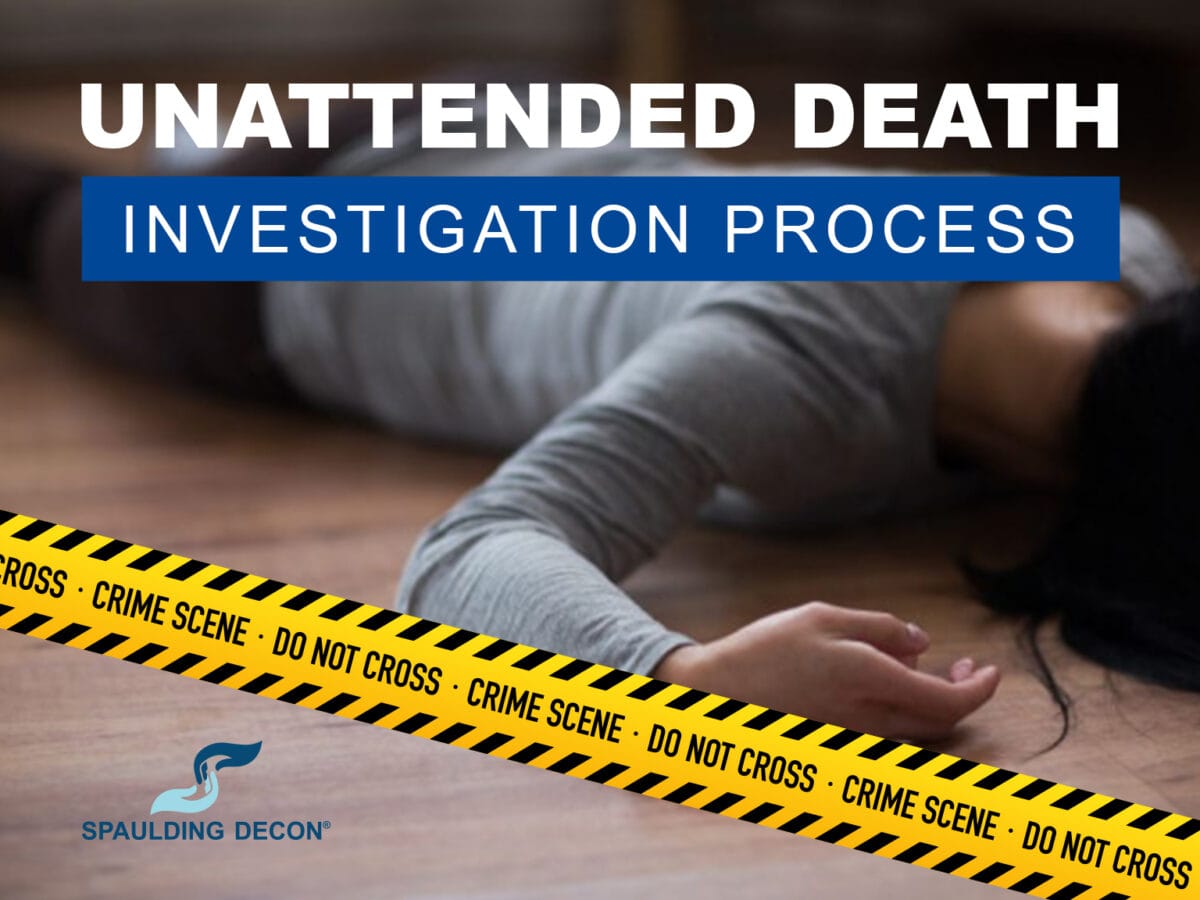Unattended Death Investigation Process
Some unattended deaths are considered suspicious when foul play is suspected. Law enforcement will use forensic science and investigation techniques to calculate every detail of the victims death, including time, place, and potential suspect, if there is one. Unattended deaths happen most commonly with the elderly succumbing to natural causes, but another common reason includes suicides and homicide. If a loved one suffered an alleged unattended death, an investigation and autopsy would likely be administered to give your family answers.
Homicides often go undiscovered for an extended period, as intended by the suspect. Its law enforcements job to determine the who, what, and sometimes, where.
The First Steps Are Crucial When Finding An Unattended Death
Family members and friends checking on a family members wellness usually are the ones to discover their unattended death. If youre in this situation, the first thing you should always do is call the police.
After calling the police, you need to look out for your health and move away from the area. Do not touch the body or disturb the site as it can impede the investigation. In the last part of this guide, we talked about potential health risks associated with unattended deaths. Lastly, secure the scene by keeping others away and wait for law enforcement to arrive.
What Happens In An Unattended Death?
Once dispatched to the scene, law enforcement will try to ascertain whether or not foul play was involved.
Investigators from the county coroners office will be sent to the location to investigate the scene jointly. Unattended and sudden deaths are treated differently than expected deaths meaning most scenes require a sergeant supervisor or above.
Law enforcement will photograph the scene, collect evidence, and take the body away preserving it for an autopsy. Unattended deaths can be for reasons like homicide, suicide, accidental death, and medical conditions.
Determining Time Of Death
Death investigations dont always play out like in Hollywood TV shows and movies. A paramedic does not always witness the death in a last-ditch effort to save the victim. In a clinical setting, supervised deaths allow medical staff and law enforcement to determine the exact time of death.
The body will always tell a skilled investigator when the heart stops beating. The decomposition process is predictable, allowing forensic investigators to determine an approximate time of death.
Along with determining the time of death, investigators will look to determine the cause of death. Theyll look for bruising, cuts, and other signs of physical trauma.
Investigators will look at signs like body temperature, substances in the bloodstream, the degree of rigor mortis, stomach contents, skin condition, and blood pooling inside the body.
Forensic entomology also allows investigators to ascertain the time of death based on the type and amount of bugs around and inside a body.
Are Unattended Deaths Treated As Suspicious?
The process of undertaking a forensic investigation begins at the scene of the bodys discovery. Usually, the first question a coroner will ask is whether the scene is the location of the death itself. If the answer is no, then most likely, the death was due to foul play.
A potential homicide investigation is made more difficult because there likely werent any witnesses to the death. Every death without a clear cause of death is treated as suspicious.
The Three Stages Of The Death Investigation Process
The three stages of a death investigation are examination, correlation, and interpretation in the examination phase.
- Examination: In the examination stage, investigators will collect evidence and take photos to lay the groundwork for their investigation. An external examination is always done. When needed, an internal examination (autopsy) is done.
- Correlation: In the correlation phase, information collected by investigating parties is examined to put together a case and conclusion.
- Interpretation: In the interpretation phase, investigators will determine the cause of death and whether further investigation is needed because of foul play.
Is An Autopsy Required For An Unattended Death?
There are no federal laws requiring an autopsy for a medically unattended death, although most states require it. If an autopsy is requested, the coroner will attempt to determine the cause of death and its circumstances.
As stated, autopsies allow investigators to know if foul play was involved.
One other important reason for an autopsy is determining if the COD was a dangerous infectious disease that may affect public health.
Real-Life Examples
Here are some real-life examples from recent news:
- A 59-year-old woman in La Quinta, CA was arrested for the suspected homicide of an 85-year-old woman. Investigators said the unexplained injuries on the victim were inconsistent with statements made.
- A Columbia, SC man was found dead in a rental home for two days. The case was not immediately ruled a homicide, but investigators later determined the cause of death to be strangulation.
- Nearly 11 months after discovering an unattended death, a man in Pilot Mountain, NC, was charged with the murder of a 29-year-old-man after he supplied him with narcotics.
Whats Next?
The investigation and autopsy are completed within 24 hours in most unattended deaths. Waiting any longer can interfere with the results. After the autopsy is completed, the body is released to the next of kin. The county coroners office will usually give next of kin 72 hours to arrange transport of the body to a funeral home.
In the first part of this guide, we discussed what to do when faced with the unattended death of a family member. Unfortunately, the local government wont offer any assistance in cleaning up the aftermath of an unattended death.
You could try to clean up the death site on your own, but thats not a good idea for two reasons:
- Reliving the death of a loved one is not suitable for your mental health.
- If you dont know what youre doing, you could put yourself at risk and anyone who inhabits the space in the future.
After law enforcement has finished their investigation, call unattended death cleanup experts who use OSHA-approved methods and medical-grade disinfectants.
Read More





